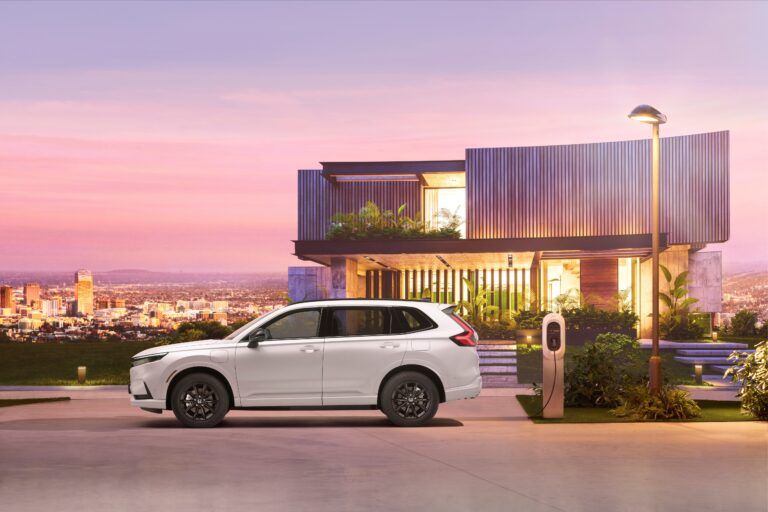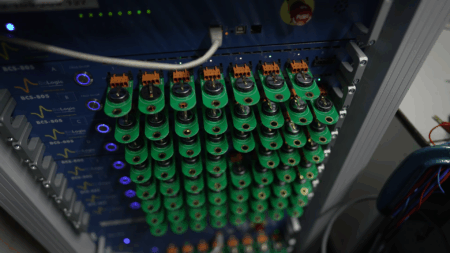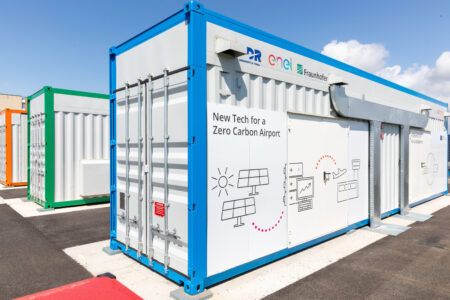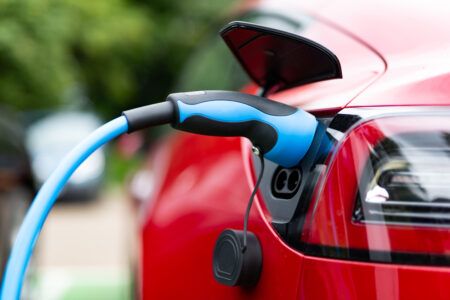As with the Civic that it launched in 2022, Honda has decided on a hybrid-only range for its latest CR-V. Within the line-up, there is the option of either the standard hybrid (e:HEV) or, for the first time on a European Honda, the plug-in hybrid (e:PHEV) version. Honda says the broader range of electrified options is designed to give customers the greatest choice when it comes to choosing non-ICE products.
Reluctant to go fully onto battery power, means the internal combustion engine remains in the new SUV. The CR-V’s 2-liter Atkinson cycle petrol engine itself has undergone some changes, with a new high-pressure multi-stage direct-injection fuel systems, alongside an upgraded catalyst. This component, which activates at lower temperatures, improves environmental performance of the big SUV. Elsewhere, the exhaust port surface has been expanded to improve power output, while interior refinement has been upgraded thanks to a new engine cover, extra NVH insulation and increased rigidity of the crankshaft.
The base for the e:HEV’s powertrain is now familiar, having been seen in the likes of Civic and other Honda models in the recent past. However, in the CR-V, it has been given a slight overhaul, with a more energy-dense and downsized battery, as well as a more efficient electric motor. The engine in the e:HEV is mated to a new version of Honda’s dual electric motor automatic transmission, which houses the propulsion motor and generator on a separate axis. A second gear ratio has been added – a low ratio, which joins the existing high one – to enable ‘the widest range of driving scenarios possible’, says Honda.
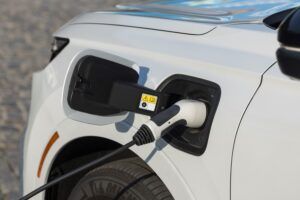
Finally, the upgraded e:HEV also features more compact power control and intelligent power units. Both have been downsized and revised but retain roughly the same amount of energy density and efficiency, albeit in a smaller, lighter package.
The result of all these improvements is a 6.5% increase in torque – to 335Nm – without taking up any more space in the overall design layout. Meanwhile, motor speed has been increased by 1,500rpm to 14,500rpm, enabling a top speed that is 7% higher than previous models (187km/h (116mph)).
For the e:PHEV, there’s a larger 17.7kWh battery pack and a lightweight onboard electric charger. As a result, the engine speed can be kept lower than previously, therefore improving overall noise, refinement, and fuel efficiency. As a result, the new setup enables drivers to cover up to 81km (50 miles) in electric-only propulsion. These battery powered miles help record consumption figures (WLTP) of 0.8L/100km (353.1mpg) and CO2 emissions of 18g/km. Charging-wise, at 25°C, the CR-V’s battery can be fully replenished in 2.5 hours.
One of the aims of the new CR-V was an increased level of security and safety (Hazard help from Honda) for drivers and passengers. Contributing to this target is an upgraded chassis, achieved using lighter but stronger materials as well as reinforcements around the B and C pillars. An all-new aluminum subframe is used at the front of the car, saving 5kg over the outgoing component. At the other end of the car, there’s another new subframe, featuring two stiffeners added to the open box section to ensure there is no deformation on the chassis. Support mounts at the rear get a 15% increase in sprint rates.
Dampers are another area of improvement, as the e:HEV benefits from amplitude reactive dampers that vary force depending on vibration frequencies generated by road conditions. Meanwhile, the e:PHEV gets a full adaptive damper system that relies on a wealth of sensor data such as wheel speed, lateral and longitudinal g-force, and yaw rate.
Another dynamics-based upgrade is what Honda is calling an ‘evolved’ version of its all-wheel-drive system – now featuring a control system to better distribute driving force. While the old car’s AWD technology disengaged at higher motorway speeds, its replacement retains control of the rear axle. The result is increased levels of grip on faster roads, regardless of the conditions.

As well as a revised powertrain, the new CR-V is the first model in the Honda range to feature the company’s Sensing 360 safety and driver assistance system. Core to the innovation is a 100° forward facing camera, a millimeter-wave radar and four corner radars, which enable a complete all-round view of the vehicle. The combined camera and radar setup allows the vehicle to spot road lines, verges, motorcycles, cyclists, and other road users.
The arrival of Sensing 360 allows the first use of Honda’s Front Cross Traffic Warning system, which is designed to reduce head-on collisions when there is poor visibility at intersections. There’s also an advance traffic sign recognition system that detects, recognizes, and displays the relevant information on the instrument binnacle in front of the driver.
Adaptive cruise control has also been updated, with one-touch speed adjustment to speed limits. Elsewhere on the CR-V there’s a European Honda debut for a pre-notification of signs system, to give the driver the earliest opportunity to prepare for what potential dangers lie ahead. Other elements of Sensing 360 are lane change collision mitigation and collision mitigation braking.
Traffic Jam Assist is also new, which reduces the workload of the driver in low-speed congested traffic by keeping the vehicle in its lane. When speeds increase, the system defaults back to the lane keep assistance setting. Other new features for the sixth generation of CR-V are active lane change assist and pilot parking, further making life easier for drivers.
